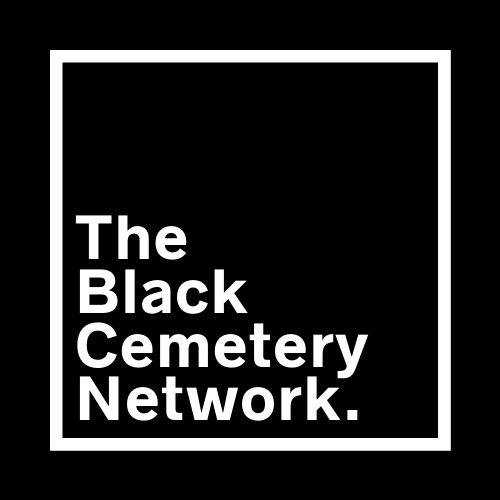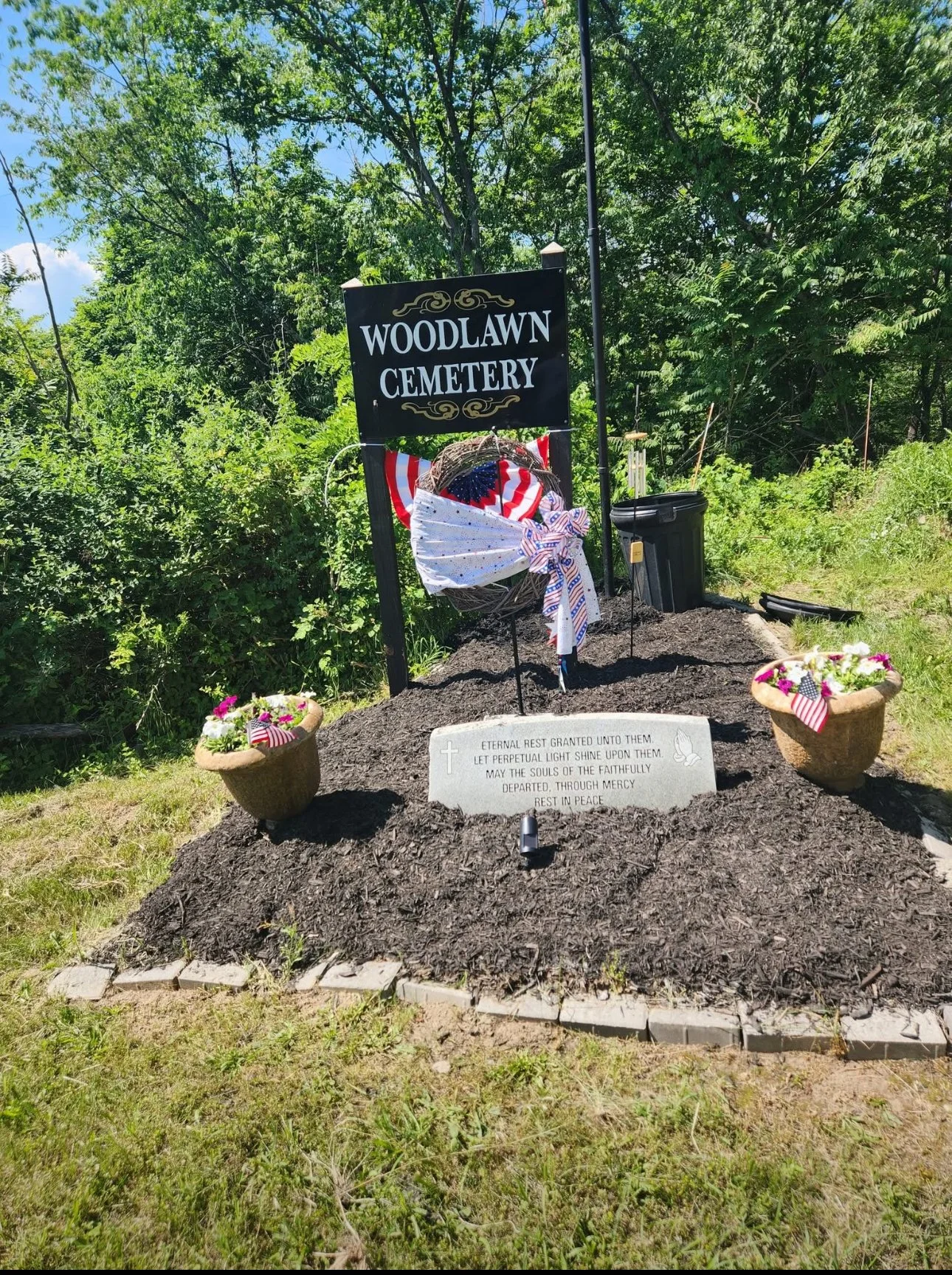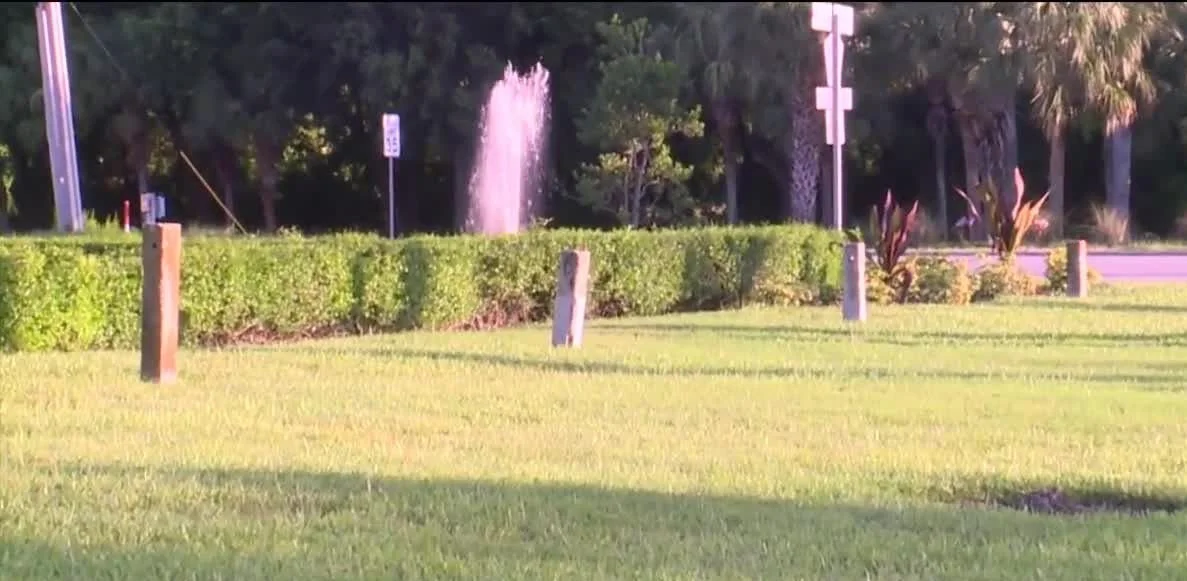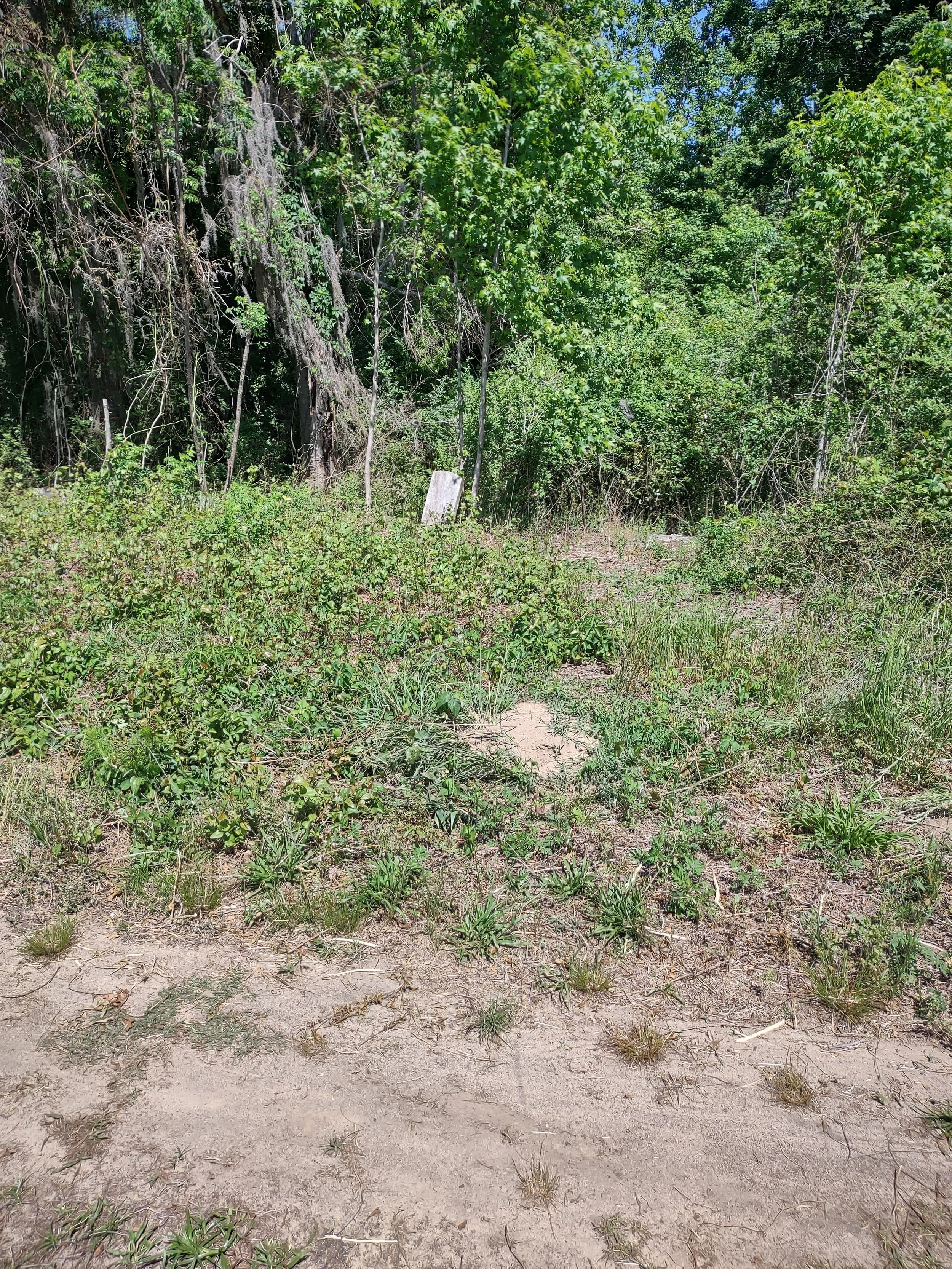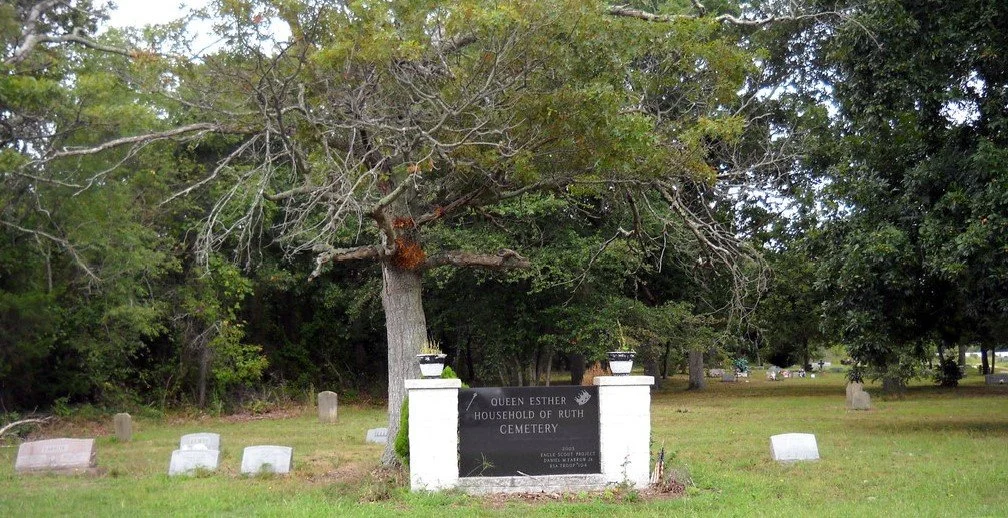SITE DIRECTORY
To learn more about any of the BCN sites listed below, click “Read more” to view individual site briefs. To search for a specific BCN site, use the search bar below:
Rosson Memorial Cemetery
Rosson Memorial CEMETERY
FOUNDED: 1874
ADDITONAL NAMES: Rossons Cemetery Kenton
AFFILIATION(S):
N/A
HISTORY:
Established in 1874 as a burial ground for the Rosson family, who played a prominent role in the area’s early history. Among the first to be interred were Samuel M. Rosson (1814–1885), a Confederate soldier, along with his sisters Elizabeth Rosson Graham (1848–1874) and Mary Robinson Rosson (1816–1880). For many years, the cemetery was primarily used by the members of the Rosson family. The cemetery’s rich history took a significant turn with the involvement of African American families before the end of the Reconstruction era. One of the most prominent African American families connected to Rosson Memorial Cemetery is the Cole family. William Carter Cole (1879–1975) and his wife, Sophia Brown Cole (1889–1965), were the last individuals buried there. Their family’s deep ties to the community began a new chapter in the cemetery’s history, reflecting the evolving racial landscape of the area. William Carter Cole, a lifelong resident of Kenton, served many roles, including working at Shatz Produce House and preparing bodies for burial before undertakers were widely available. His leadership in the community and St. Paul Missionary Baptist Church, along with his legacy as a father of seven, left a lasting mark.
BCN Contact Information:
John Moore
St. Peter’s Cemetery
ST. PETER’S CEMETERY
FOUNDED: 1851
ADDITONAL NAMES: N/A
AFFILIATION(S):
Bethesda African Cemetery Coalition
HISTORY:
The two main demographic groups buried at the cemetery are African Americans and Irish, with numerous other immigrant groups, which makes it unique. The two main churches that are buried at the cemetery are designated as a Historic Landmark. St. Peter Claver Catholic Church, located in Baltimore's Sandtown community, is a historic landmark that was founded in 1888 by the Josephite Fathers to serve Black Catholics and is the first parish in the world dedicated to St. Peter Claver, the "Apostle of the Slaves". The other main church that is buried at the cemetery and is also a Historic Landmark Designation is St. Peter the Apostle Church. St Peter the Apostle was a Roman Catholic church located within the Archdiocese of Baltimore, Maryland. Constructed at the northwest corner of Hollins and South Poppleton Streets (848 Hollins) and (11-13 South Poppleton), it was often referred to as "The Mother Church of West Baltimore" and served as a pillar of the Irish Community. The church is no longer catholic owned and is now an African American congregation: Carter Memorial Church of God in Christ.
BCN Contact Information:
Jennifer Johnson
Speedwell Cemetery
SPEEDWELL CEMETERY
FOUNDED: Unknown; 1942 Reinternment
ADDITONAL NAMES: Park Cemetery/Cemetery B
AFFILIATION(S):
Friends of the Bluegrass Memorial Cemeteries
HISTORY:
Speedwell Cemetery, located on Speedwell Road, is an approximately 7.5-acre site explicitly designated as the segregated final resting place for the African American community whose homes and ancestral burial grounds were seized by the Army in order to make the Blue Grass Army Depot in 1942. This site powerfully embodies the deep-seated racial hierarchies of the era, extending even to the treatment of the deceased, as they were segregated with white individuals buried in the Bluegrass Memorial Cemetery. Speedwell Cemetery received a substantial number of relocated remains, approximately 900. Though the identities of many are tragically lost—a direct consequence compounded by decades of neglect that disproportionately affected this site. At its entrance, a chain-link fence with a gate provides access. Beyond the grave markers themselves, no other structures are present within the cemetery. Among those identified is Private Edward Francis (1830-1897), a U.S. Colored Troops (USCT) veteran of the 114th USCI, born into slavery, who gained freedom through his courageous service in the Civil War. His personal letters home vividly reveal his deep longing for his enslaved wife and three children, his gratitude for health and strength during his service, and his determination to learn to read and write. Francis's story, alongside those of other USCT veterans interred here, such as Edmond D. Collins (1845-1903), Lewis Gilbert (1839-1909), Charles H. Todd (1836-1902), and Smith Todd (1838-1891), powerfully underscores their fight not only for freedom but also for civil rights and a place of equality for their families post-emancipation. The vast majority of Speedwell Cemetery is characterized by severe overgrowth, which has obscured countless graves, further exacerbating the historical erasure of marginalized communities. This overgrowth has also threatened and damaged any remaining grave markers. Many graves are humbly marked with only a fieldstone. While a small percentage of graves are still visible in an open grassy area, many more remain completely hidden beneath dense overgrowth and underbrush, rendering them inaccessible and tragically lost to memory.
BCN Contact Information:
Brenda Burton
breburton@gmail.com
Enon Ridge Odd-Fellows Pioneer Cemetery
ENON RIDGE ODD-FELLOWS PIONEER CEMETERY
FOUNDED: 1891
ADDITONAL NAMES: Enon Ridge Cemetery
AFFILIATION(S):
Freshwater Land Trust
HISTORY:
Enon Ridge Pioneer Odd-Fellow Cemetery holds significant historical value in telling the story of Birmingham, Alabama's Black history. Established as early as 1891, it served as a final resting place for African Americans during segregation and limited burial options. Notable interments, such as John Tuggle, husband of the prominent educator Carrie A. Tuggle, and Civil War veteran CPL Anthony Robertson, underscore its importance in the community's collective memory. Despite a 1901 resolution to close the "black cemetery" and subsequent court upholding, burials continued until the late 1950s, suggesting the community's continued need for and connection to this space. The cemetery's history reflects the challenges faced by African Americans in securing and maintaining burial grounds during the late 19th and early 20th centuries in Birmingham. The eventual decline of its upkeep, linked to urban development, highlights the vulnerability of such sites. Efforts to document the burials, advocate for its preservation through historical registries, and potential inclusion in the Birmingham Public Library's archives are crucial to recognizing and safeguarding this important piece of local and Black history. The addition of the cemetery to the Alabama Historic Cemetery Register in 2023 and the Alabama Cemetery Preservation Alliance in 2024 further acknowledges its historical significance.
BCN Contact Information:
The Masonton
wilhelminathomas@hotmail.com
https://freshwaterlandtrust.org/
Woodlawn Cemetery
WOODLAWN CEMETERY
FOUNDED: Woodlawn Cemetery
ADDITONAL NAMES: Woodlawn Burial Park, Green Mount Cemetery
AFFILIATION(S):
Friends of Woodlawn (community group)
HISTORY:
Woodlawn Cemetery, originally established in the late 19th century as Greenmount Cemetery and later renamed, is a historically significant African American burial ground in Cumberland, Maryland. Founded during the era of racial segregation, it served as the primary resting place for Black residents who were denied burial in white cemeteries. The site contains the graves of prominent African American community leaders, veterans, and families who contributed to the region’s cultural and social development. Its existence reflects the resilience of Cumberland’s Black community in the face of systemic discrimination, making it a vital landmark for understanding local African American heritage.
Today, Woodlawn Cemetery stands as an important historical and cultural resource, offering insight into the lives of Black Marylanders during the late 19th and early 20th centuries. Preservation efforts highlight its role in commemorating overlooked narratives of struggle, perseverance, and community strength. Recognizing and protecting this sacred space ensures that future generations can honor the legacy of those who shaped Cumberland’s Black history despite the challenges of segregation.
BCN Contact Information:
Tiffany Frazier
trfrazier1974@yahoo.com
https://www.facebook.com/share/g/1d6gRTYPiS/?mibextid=wwXIfr
Plot N of Rosemary Cemetery
PLOT N OF ROSEMARY CEMETERY
FOUNDED: 1931
ADDITONAL NAMES: N/A
AFFILIATION(S): N/A
HISTORY:
In the early 1920s, Mr. Creighton donated a parcel of land to Collier County for the establishment of the county's second cemetery, named Rosemary Cemetery. Reflecting the social norms of the time, segregation extended even to burial grounds. African Americans were interred along the railroad tracks at what is now the intersection of Pine Ridge Road and Goodlette-Frank Road.
Today, there are no headstones or markers to remind the community of their presence—just a few pillars and overgrown weeds. While it is possible that wooden structures, such as crosses, were once placed to mark the graves, they have since deteriorated. It is estimated that there are eight bodies buried there, likely seven adults and one child.
Efforts are being made to honor this plot of land by establishing plans to install headstones, a botanical garden-style fence, and a historical marker. On January 28, 2025, as part of an Eagle Project, Jonathan Rodriguez presented to the Board of Collier Commissioners, requesting that they recognize the cemetery as historically significant to the community.
BCN Contact Information:
Amanda Townsend & Jonathan Rodriguez
amanda.townsend@colliercountyfl.gov
Hanna African-American Cemetery
HANNA AFRICAN-AMERICAN CEMETERY
FOUNDED: 1896
ADDITONAL NAMES: N/A
AFFILIATION(S): N/A
HISTORY:
Hugh Hanna, Sr. enslaved Black people on his properties, which included a plantation and a cattle farm. His 1825 tax return indicated that he owned 2,420 acres of land and enslaved 28 individuals. In 1896, E.S. Brown and M.R. Brown sold 113 acres to Samuel M. Cameron, an African American. This land included the Hannah and Cameron Cemeteries.
Preserving the Hanna African American Cemetery in Lake City, SC, is important for honoring local Black history and preventing the erasure of the lives and stories of those buried there. As a resting place for formerly enslaved individuals and their descendants, the cemetery holds significant cultural, historical, and genealogical value. Restoring the site would help preserve community heritage, support education, and recognize the contributions of African Americans in the region.
BCN Contact Information:
Dr. Terrie Gaskins-Bryant
bryant107@frontier.com
Green Lawn Cemetery
GREEN LAWN CEMETERY
FOUNDED: 1907
ADDITONAL NAMES: N/A
AFFILIATION(S): N/A
HISTORY:
Green Lawn Cemetery was founded by a former enslaved person, Lawrence Murray, Sr., in May 1907 to serve the African American community in the City of Chester, Delaware County, Pennsylvania. African Americans were not allowed to be buried within the Chester City limits. The 8.5-acre cemetery houses approximately 2,000 burials, including the graves of at least 300 veterans of the United States Armed Services who served from the Civil War through the 20th century. Green Lawn is a vital cultural and historical resource in the community, where residents can connect and learn about African American history and life, as well as the significant contributions African Americans have made to the Chester area, the Commonwealth of Pennsylvania, and the nation.
BCN Contact Information:
Dr. Clarence "AL" Grasty
Queen Esther Household of Ruth Cemetery
QUEEN ESTHER HOUSEHOLD OF RUTH CEMETERY
FOUNDED: around 1917
ADDITONAL NAMES: N/A
AFFILIATION(S): N/A
HISTORY:
The Queen Esther Household of Ruth Cemetery was established by Black women in the community of Whitesboro. This town was intentionally created by George Henry White and other dedicated African Americans as a safe haven for Black people seeking to escape the regional racism of the Deep South and the local racism present in Cape May County. Furthermore, the Household of Ruth Cemetery serves as a testament to the ingenuity and resilience of Black women, who were its founders.
BCN Contact Information:
Rev. Douglas Moore, MDiv, Pastor, First Baptist Church of Whitesboro
rev.dh.moore@gmail.co
Morningstar Tabernacle No. 88 Moses Cemetery and Hall
MORNINGSTAR TABERNACLE NO. 88 CEMETERY AND HALL
FOUNDED: 1885
ADDITONAL NAMES: Morningstar Moses Cemetery; Moses Hall Cemetery; No. 10 Cemetery; Gibson Grove
AFFILIATION(S): N/A
HISTORY:
Morningstar Moses Cemetery and Hall, founded in 1885 in Cabin John, Montgomery County, Maryland, is a significant African American historic site established by Morningstar Tabernacle No. 88 of the Ancient United Order of Sons & Daughters, Brothers & Sisters of Moses (MT88), Its early extant minutes book is a rare artifact. It shows how MT88 supported education, burial, and aid for its Black community. The 124 documented burials, including Clara Barton’s housekeeper Emma Jones and founding community member Sarah Gibson, date from 1894 to 1977, with 433 potential burials identified by GPR surveys. MT88 built a Moses Hall on the site for its meetings and community events. The site and local Black community were impacted by the construction of the Capital Beltway (I-495) in the 1960s. The Hall’s foundations remain the only remains of the three Moses Halls originally established in the county. Eligible for the National Register of Historic Places, it stands as a testament to Black resilience, community, and history.
BCN Contact Information:
Friends of Moses Hall, Inc.
morningstarmosescj@gmail.com
Winterpock African American Cemetery
WINTERPOCK AFRICAN AMERICAN CEMETERY
FOUNDED: 1853
ADDITONAL NAMES: Patterson-Haskins Cemetery
AFFILIATION(S):
Chesterfield Historical Society
HISTORY:
In a thickly-wooded area in Winterpock (Chesterfield County), Virginia lies a burial ground where enslaved and formerly enslaved African Americans were interred from at least as early as 1853 to as late as the 1930s. The land, purchased in 1853 by James Henry Cox (1810-1877), owner of Clover Hill Coal Mines (which relied on enslaved labor), was used as a burying place initially for African Americans enslaved as domestic workers in the Cox household. Documents in the Cox family (dating to the 1850s) make mention of this burial ground. While none of the graves is marked, existing natural stones suggest that stones were once placed at the heads and feet of the graves. Two people have been identified with a high degree of certain as having been buried here in the 1930s, both formerly enslaved in the area: Edward “Ned” Patterson (c. 1835-1937) and his wife of seventy-five years Martha Jane “Jennie” Haskins Patterson (c.1842-1938). Jennie Patterson’s 1937 narrative was collected by the WPA/ Library of Congress Collection. Records suggest that other Patterson family members are buried here, one or more of their sixteen children (seven of whom lived to adulthood) and/or grandchildren. During a 2023 site visit, archaeologist Joanna Green of the Virginia Department of Historic Resources (DHR) authenticated the burial ground and estimated that it may contain as many as 30 graves. Green listed the cemetery in the VA State database of cemeteries. The land where the cemetery is located presently belongs to Vulcan Materials Corps, based in Birmingham, AL.
BCN Contact Information:
Elizabeth Logan Harris
eloganharris@gmail.com
Island Pond two
ISLAND POND TWO CEMETERY
FOUNDED: UNKNOWN
ADDITONAL NAMES: N/A
AFFILIATION(S): N/A
HISTORY:
Property Alt Key: 2582529. The land where this cemetery is located was part of an original land grant from 1884 belonging to Burrell Reese. Burrell and his family were enslaved in the Apopka area before the Civil War. Burrell's land was adjacent to his son-in-law, Jackson Knight's land. Both Burrell and Jackson have cemeteries located in the southwest corners of their original land grants. According to some death certificates, the cemetery on Jackson's land was named Island Pond Cemetery. In 2009 when Margaret Reese-Williams began searching for her family history and located both cemeteries, she registered them on the Florida Master Site File. She heard that Island Pond One was no longer used when it became full. That is when more burials occurred at the other site. Margaret gave the official name of Island Pond 2 to the cemetery on Burrell Reese's land. Property records show that the Island Pond 2 site, which is 5 acres, was owned in the 1940s by the Sorrento Burial Society. Today it is held by a private landowner who has applied for a family lot split so that homes may be built on the two plots. This site has had grave markers removed over the years and heavy equipment was brought on to do clearing as recently as 2023. The current property owner is not cooperating with efforts to preserve and protect the cemetery.
BCN Contact Information:
Katherine de Jongh & Margaret Reese-Williams
ELMWMP@COMCAST.NET
Island Pond One
ISLAND POND ONE CEMETERY
FOUNDED: early 1880s
ADDITONAL NAMES: N/A
AFFILIATION(S): N/A
HISTORY:
Island Pond One was formed out of land owned by Jackson Knight, through the Homestead Act. Jack or Jackson Knight, along with a group of former slaves from the William Shelton Delk "plantation" from Apopka, Florida settled in this area after the end of the Civil War. They named this area Island Pond. Property records show two cemeteries and a church, the Island Pond Primitive Baptist Church, existed on adjacent parcels. Over time the lands were sold off piece by piece. These early residents contributed significantly to the creation of and the economy of nearby communities of Mount Dora, Sorrento, and Eustis. In 2009, two women from Fort Pierce came to Lake County, Florida, researching their family history. Their persistence paid off and they registered two cemeteries on the Florida Master Site File, Island Pond One and Island Pond Two. In 2023 a nonprofit was formed to aid in the research, restoration, and preservation of the two cemeteries. In January of 2024, a committee working on behalf of the Division of Historical Resources selected our grant application for funding from the Abandoned African American Cemeteries Grant Program. We are awaiting the legislature's approval for the requested funding for the project.
BCN Contact Information:
Katherine de Jongh
katherine.dejongh@aol.com
Big zion Cemetery
BIG ZION CEMETERY
FOUNDED: 1863
ADDITONAL NAMES: N/A
AFFILIATION(S): N/A
HISTORY:
Big Zion AME Zion Church was founded in 1863 by Solomon Johnson. While he was enslaved, he asked his enslaver permission to build a "brush-harber" on the plantation. He granted Solomon Johnson the site as a permanent meeting place for worshipping and assigned a space as a burial ground for his slaves in 1863, documented records attest to the donation are located in the Tangipahoa Parish Clerk's Office is dated 1871. An additional two acres of land was donated to the church for a cemetery by William Woods to Solomon Johnson. Solomon Johnson is buried in Big Zion Cemetery; along with other men and woman who served in the military, educators, farmers, and church members.
BCN Contact Information:
Antoinette Harrell
afrigenah@yahoo.com
San Marcos Blanco Cemetery
SAN MARCOS BLANCO CEMETERY
FOUNDED: 1893
ADDITONAL NAMES: SMBC, San Marcos Community Cemetery
AFFILIATION(S):
———
————-
HISTORY:
Extensive research was conducted by the late Ms. Ollie Giles. The San Marcos-Blanco Cemetery was established in 1893 by five African American men. Wyatt Newman, James Landon, Henry Richardson, Lucky McQueen, and Miles Bowen purchased the 10.62 acres for $200 cash.
Officially, the cemetery became the San Marcos-Blanco Association Cemetery in 1901. In 1981, several local residents reorganized a cemetery association and had the name changed to San Marcos Community Cemetery. Some years later it was changed back to San Marcos-Blanco.
Today there are more than 400 graves with headstones and inscriptions. Many others do not have headstones, and Giles says there are probably still more that are unmarked and undiscovered. The cemetery is located on Post Road north of San Marcos. Initiatives will be focused on the maintenance and preservation of the site. It is presently being encroached upon by local expansion efforts. Vandalism and unauthorized entries onto the grounds contribute to our concerns.
BCN Contact Information:
Johnnie Bratton, Jr
Brainerd Cemetery
BRAINERD CEMETERY
FOUNDED: 1734
ADDITONAL NAMES: N/A
AFFILIATION(S): N/A
HISTORY:
Brainerd Cemetery is one of two cemeteries operated by the First Presbyterian Church of Cranbury. According to our records, the earliest burial occurred in the "Old Yard" in 1738. From information gleaned from church maps, records and longtime members, we know that behind the "Old Yard" was an area that had been designated both as the "Colored Section" and the "Potters' Field." The earliest burial in the segregated section was that of Edward Ditmars in 1846 (born 1784), and the most recent burial was 2010. We also know that there were at least two formerly enslaved women buried in the cemetery-- Gracie Allen & "Aunt Jennie." Our church's records note that Gracie Allen (1790 - 1875) "Freed Slave of Bayles Family." While her name is in our records, we have not been able to find her headstone. It is possible that she was originally given a simple wooden marker that has succumbed to elements or that a stone one was broken.
BCN Contact Information:
Sarah Mayer, lead researcher
cranbury252@cranburypres.org
Handley Hill Historic African American Cemetery
HANDLEY HILL HISTORIC AFRICAN AMERICAN CEMETERY
FOUNDED: 1878
ADDITONAL NAMES: Old Ebenezer
AFFILIATION(S):
Constellation of Living Memorials
HISTORY:
The Handley Hill historic African American cemetery was founded in 1878. The original site of the Ebenezer Missionary Baptist church and Prairie Chapel school is to the west of the burial site. The Church moved in 1944, and the last burial was 1966.
This is the highest point in Tarrant County, Texas, and was the site of the Battle for Village creek on May 24, 1841. The Texas & Pacific railroad followed the Jefferson rd, from Dallas in 1876 arriving in Fort Worth that July. The Northern Texas traction company followed in 1900 with construction of a Powerplant, and a dam which created what we call Lake Arlington Today. The Interurban was the Electric Road that ushered in the modern era of Texas history when she began daily service on July 2,1902. The Interurban operated for 33 years and transported 28 million passengers and left behind what we call the DFW METROPLEX today. This cemetery contains the African American founders and Pioneers of the STOP SIX Community of Southeast Fort Worth. Amanda Davis was the first landowner in 1896 when she purchased an acre of land for 40$. She is buried here as well as the Alonzo Cowan family, the Stalcup Family, the Elgin family, and Howard families. These are the rock upon which the New Stop Six is rising. The Community of southeast Fort Worth is very proud but has been gentrified in an attempt to erase the entire culture of Black wall Street, and the legacy that led the National Juneteenth Museum here, as Dr Opal Lee has shepherded. Last year the Friends of Handley Hill were successful in preventing the development of the surrounding parcels of land East, west, and North into a parking lot, and towing yard. Late last year the city of Arlington purchased the land, and preserving the integrity of the over 600 souls buried here. The families are also Military veterans of the Civil War, Buffalo Soldiers, World War 1, World War 2, Korea and early Viet Nam. This hallowed ground has faced unrelenting destruction for decades.
Today The Friends of Handley Hill can report the Site is secure thanks to Constellation Energy and the citizens of Arlington, Tx. The community discussion has begun on restoration.
BCN Contact Information:
The Friends of Handley Hill
Loving Care Cemetery
LOVING CARE CEMETERY
FOUNDED: Unknown
ADDITONAL NAMES: Mount Zion Cemetery
AFFILIATION(S): N/A
HISTORY:
In the 1950’s, our parents purchased a 5-acre tract of farmland that contained a small cemetery. Eventually, our parents decided to reopen the cemetery, renaming it Loving Care Cemetery in the late 1960’s, to allow burials, as it had been one of two cemeteries (Mayberry is the other) that families living in the Seffner, Thonotosassa communities had utilized as a final resting place for their loved ones.
The oldest residents recall seeing a headstone but over time the many of the headstones and two obelisks has disappeared. The oldest headstone we have currently is for Mr. Sampson Forrester, born March 1, 1786, and passed away on November 29, 1888. With the passage of time, many of the headstones have deteriorated and some of the grave spaces cannot be identified. There are approximately 60+ people buried in Loving Care, and the owners of the cemetery frequently get requests from family members of the deceased to be buried with their loved ones.
BCN Contact Information:
Ida Booth
Idabooth@gmail.com
African-American Ancestral Burial Ground at Vale Cemetery
AFRICAN-AMERICAN ANCESTRAL BURIAL GROUND AT VALE CEMETERY
FOUNDED: 1863
ADDITONAL NAMES: Vale Cemetery
AFFILIATION(S): N/A
HISTORY:
The African-American Ancestral Burial Ground at Vale Cemetery is the final resting place of abolitionists, Underground Railroad activists, advocates for African-American freedom, former slaves, war heroes, and people who were the fiber of Schenectady’s African-American community that began in the late 17th century. Vale Cemetery was established in 1857. Beginning in 1863, the African-American burial ground—formerly called the Colored Plot—was moved from Veeder Avenue to the present location. Vale Cemetery is listed as a National Park Service Underground Railroad Network to Freedom Site.
Notable members of the African-American community include: Moses Viney (1817-1909), a fugitive slave from Easton, Maryland who traveled the Underground Railroad to New York in 1840. While living in Schenectady, Viney was employed by Eliphalet Nott, President of Union College, and later he established a livery business and became a respected businessman. R.P.G. Wright (1772-1847) was an advocate for the education of African-Americans and president of anti-slavery conventions in the 1840s. Corporal Jared Jackson (1840-1888) served with Company N of the 20th Regiment of Colored Troops in the Union Army during the Civil War. The Vale community hosts an annual Juneteenth celebration at the African-American Burial Ground to honor the day the last slaves were freed by the Emancipation Proclamation, June 19th, 1865. The program includes a reenactment of Moses Viney’s escape from slavery.
BCN Contact Information:
Vale Cemetery Preservation, Inc.
vale@valecemetery.org
African Burial Ground at Historic St. Agnes Cemetery
AFRICAN BURIAL GROUND AT HISTORIC ST. AGNES CEMETERY
FOUNDED: 1867
ADDITONAL NAMES: N/A
AFFILIATION(S): N/A
HISTORY:
The African Burial Ground at Historic St. Agnes Cemetery is the final resting place of 14 former enslaved people—6 women, 1 man, 2 children, and 5 infants. St. Agnes Cemetery was established in 1867 and was listed on the National Register of Historic Places in 2008. In 2005, 13 human remains were disturbed in an undocumented burial ground during a construction project in Colonie, New York. The remains were placed in the care of the New York State Museum, along with one other individual whose remains were found during a construction project in 1998. Historical and bioarchaeological studies identified the unmarked burial ground as a place once used by individuals enslaved by the prominent colonial Schuyler family, and the analysis determined that most of the individuals were of African ancestry, with one woman of mixed Native American and African ancestry. The burials date to the 1700s to the early 1800s. The area of the former Schuyler estate is known today as Schuyler Flatts and is located along the Hudson River about 5 miles north of Albany, New York. The Schuyler Flatts Burial Ground Project Committee worked with archaeologists, artists, woodworkers, and historians, creating individually decorated burial containers and a reburial ceremony to honor these individuals. In 2015, St. Agnes Cemetery donated this burial site and the Town of Colonie funded the tombstone and marker. The day before the ceremony, the burial containers with the remains laid in state at the Schuyler Mansion, a state historic site once inhabited by relatives of the estate operators. On June 18, 2016, an interdenominational memorial ceremony honored the individuals as their remains were laid to rest with dignity and respect. On June 17, 2017, a bronze plaque was dedicated to mark the Historic African Burial Ground site at Historic St. Agnes Cemetery. The original African Burial Ground site at nearby Schuyler Flatts has a historical marker describing the discovering of the remains and the reburial project.
BCN Contact Information:
Historic St. Agnes Cemetery
Info@ADCemeteries.org
https://www.albany.org/listing/historic-st-agnes-cemetery/1806/
